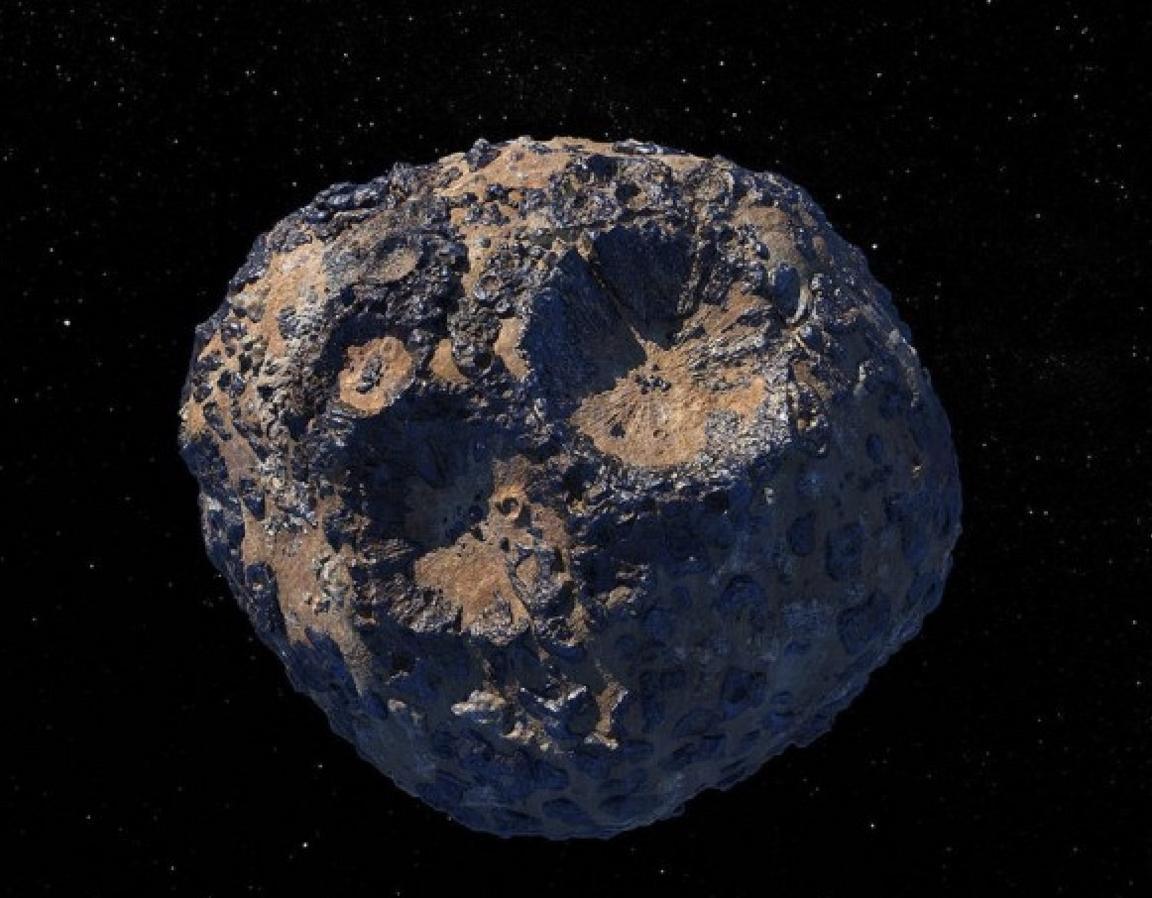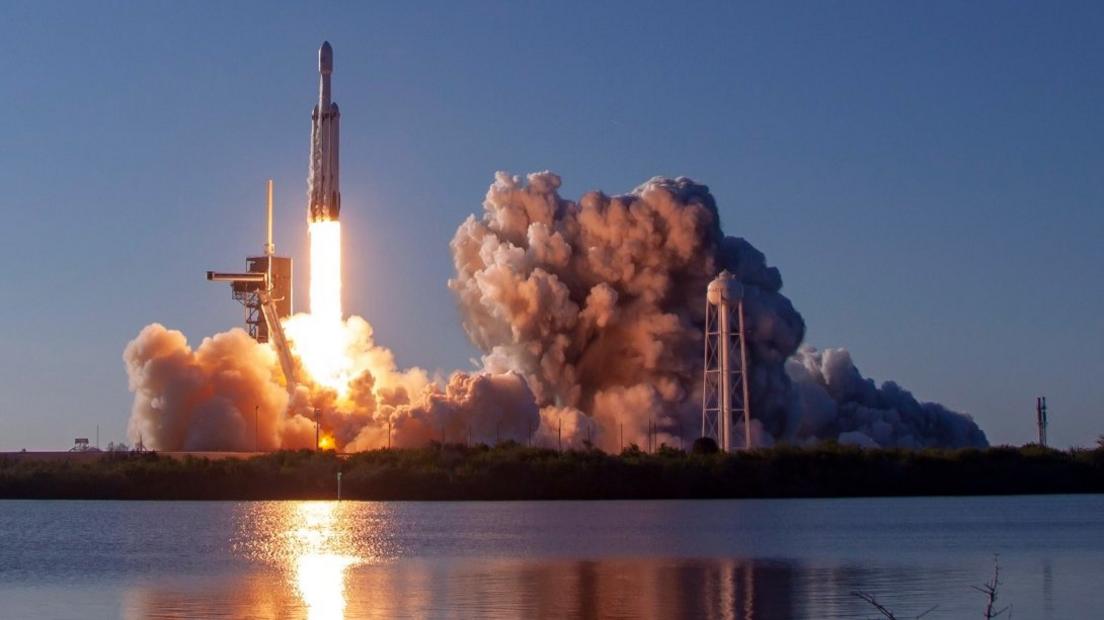Golden asteroid: Nasa mission set to launch in 2023
- Published
- comments

This illustration shows what the 140-mile-wide asteroid looks like, it is the thought to be the core of a dead planet.
Somewhere between the orbits of Mars and Jupiter lurks a massive metal asteroid known as 16 Psyche.
Nasa has announced it plans to launch a mission to the 140-mile-wide rock in October 2023.
The asteroid is thought to contain a core of iron, nickel and gold worth a whopping $10,000 quadrillion.
That's enough money to make everyone on the planet a billionaire. Not that there are any plans to remove it!
Software issues delayed original launch
Nasa previously planned the launch of this mission for August this year, but a series of delays including software malfunctions meant the space agency had to put the launch date back.
Having missed its original window to set a course for the asteroid belt the launch will now have to wait until October 2023. Eventhen,if the mission is successful the unmanned spacecraft won't reach its target until - August 2029 because it is so far away.
I am extremely proud of the Psyche team... I am confident in the plan moving forward and excited by the unique and important science this mission will return
What's the mission?
The 16 Psyche asteroid is in the main asteroid belt in the solar system, between Jupiter and Mars.
This mission is part of Nasa's new low-cost robotic Discovery programme, where the spacecraft will hope to find out more about unexplored asteroids like this one, particularly because unlike most we know to be icy and rocky - 16 Psyche is thought to be the exposed metallic heart of a dead planet.
It'll blast off aboard a SpaceX Falcon Heavy rocket - the world's most powerful rocket in history - and when it gets there scientists hope it will help them understand more about Earth's core.
A magnetometer to measure magnetic field
A multispectral imager to take pictures and find out what its made of.
Spectrometers that analyse the neutrons and gamma rays coming from the surface.
As well as the three main instruments on board which will help capture images and data that can be analysed back on Earth, it's also carrying one other fancy piece of equipment... a high-data-rate laser - space broadband to you and me!
That's because developing communications deeper into space will help Nasa establish a connection between Earth and Mars.
- Published12 April 2019

- Published31 October 2022

- Published6 January 2021

